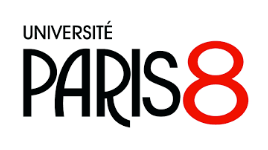
My research focuses mainly on the formal and psycholinguistic description of signed languages, with areas of study concentrating on :
- syntax: study of syntactic complexity through subordination (relative propositions, adjuncts and complements, questions, etc.), but also its processing (asymmetries between subject and object relative propositions, between subject and object WH questions, between direct and indirect discourse, etc.) and its acquisition.
- semantics: study of the expression of temporality in sign language, the semantics of questions and false questions, coreference and its interaction with the principles of binding theory in LSF. Study of the acquisition of logical operators by children aged 6 to 12.
- linguistics of signed languages: study of semantic, syntactic and morpho-phonological aspects and their processing in French Sign Language.
- psycholinguistics: study of the processing of relative propositions and questions in LSF, LIS and LSC. Signed aphasia
- Signed language acquisition: as part of the SiLSA project.
Bachelor
- Acquisition du langage (L3, Université de Genève, 30h)
- Domaines et Métiers des SDL (L1+, UP8, 39h)
- Voix et Posture (L1+, UP8, 39h)
- Pathologies du langage (L2, UP8, 52h)
- Acquisition langue première (L2, UP8, 39h)
- Analyse contrastive Français/LSF (L3, UP8, 39h)
- Méthodes expérimentales et psycholinguistiques (L3, UPC, 54h)
- La description linguistique, du corpus à l'analyse (L1/L2, UPC, 84h)
- Langues du monde (L1/L2, UPC, 84h)
Master
- Méthodes expérimentales (Master, Université de Genève, 30h)
- Psycholinguistique : challenges et méthodes (Master, Université de Port-au-Prince, 30h)
- Séminaire de linguistique (Master LAVS, UP8, 55h)
- Linguistique expérimentale (Master LAVS, UP8, 18h)
- Diversités théoriques en SDL (Master ILSF, UP8, 39h)
- Language in the Visual Modality (Cogmaster, ENS, 36h)
- TD Syntaxe générative (Master SDL, UPC, 36h)
Others
- Formation ELAN débutant et avancé (CORLI, 12h)
- Détecter les aphasies en langues des signes (FNEO, Rouen, 2h)
Responsible for SDL students who have chosen the Psychology minor
Ph.D students :
Member of the thesis monitoring committee
Ruoxuan Li (Université Paris Cité, LLF) "Towards a typology of wh-in situ strategies: theoretical and processing perspectives"
Adrien Dadone (UP8, SFL) "Les subordonnées relatives en « que » et « qui » : analyse d’un point de résistance dans l’accès à la littératie d’adultes sourds locuteurs de la langue des signes française (LSF) langue 1 et proposition didactique de remédiation"
Jessica Lettieri (ENS, IJN - UPC, LLF) "The syntax of bimodal bilingualism"
Sajjad Karmaly (UP8, SFL) "Dynamique morphophonologique des mots : un cas d'étude en morphologie dérivationnelle"
Master thesis students:
Qiuji Huang (Master LAVS, UP8) "Les questions en Hakka Yuancheng" - supervisor
Tsiory Rakotoarisoa (Master LAVS, UP8) "Les troubles du langage associés à la schizophrénie" - supervisor
Chayma Amdouni (Master LAVS, UP8) "La Langue des Signes Tunisienne" - co-supervisor (with Marie Perini)
Anna Pietrzak (Master Orthophonie, Université Montpellier) "Adaptation de la PCA à la Langue des Signes Française" - co-supervisor (with Sylvie Mortiz-Gasser)
Bachelor students (internships):
Nohaila Saffir (Licence 3 SDL, UP8) - Maitre de stage
Oumaya Chelbi (Licence 3 SDL, UP8) - Maitre de stage
Juliette Defaye (Licence 3 SDL, UP8) - Maitre de stage
SIGN LANGAGE’ SYNTAX AND ACQUISITION (SILSA) ANR – AAPG 2023
Rôle : PI
A 4-year project aimed at completing the syntactic description of complex sentences in LSF and then studying their acquisition by Deaf signing children according to their linguistic profile. This project aims to fill the gaps in the description of the syntax and acquisition of French Sign Language (SiLSA). A necessary first step in this direction will be description, as the syntax of French Sign Language (LSF) is still largely unknown, especially when it comes to complex sentences. At the end of our research, we'll be able to determine whether cases of subordination appear in LSF for adverbial clauses, for which and in what forms. This will enable us to identify any patterns common to adverbial clauses for marking subordination, but also to subordinate clause types, which will help us to complete the grammar of complex sentences in LSF. The completion of the description of the adult grammar will then enable us to begin studying the acquisition pathway of complex sentences by children using a battery of behavioral tests. This ANR project will fund the hiring of two post-doctoral researchers, Deaf collaborators, and two colloquia dedicated to i) subordination in signed languages, ii) signed language acquisition.
THE PROCESSING OF RELATIVE CLAUSES IN LIS AND ITALIAN:
In collaboration with Elena Fornasiero (Post-doc, University of Venice) Study of the comprehension of relative sentences in Italian and Italian Sign Language (LIS), two languages that are very different in terms of their relativization strategy. Italian features post-nominal external-head relatives, while LIS features internal-head relatives. We replicate the eyetracking paradigm used in Hauser & Pozniak (2019) to investigate the presence or absence of asymmetry between subject and object relative propositions. To this end, we compare the performance of monolinguals (Italian, LIS) with that of CODA (Child Of Deaf Adults) individuals, bimodal bilinguals.
The aim of this study is twofold: (i) to assess SRC and ORC comprehension in two typologically different languages, namely LIS (SOV displaying IHRCs) and Italian (SVO displaying EHRCs) using a time-sensitive method: Hauser &Pozniak's (2019) eye-tracking Visual-only World Paradigm, adapted to sign languages; (ii) compare the performances of L1, L2 deaf participants and hearing Italian/LIS bimodal bilinguals, to see whether these populations vary in their processing of LIS IHRCs and whether the performance of the latter population may be influenced by their bilingualism.
QUESTION-ANSWER PAIRS IN SIGN LANGUAGE:
In collaboration with Caterina Donati (Professor, Université Paris Cité) We propose to reinterpret the typology of pseudo-clivatives in terms of a process of grammaticalization ranging from questions/answers (QAPs) to free relatives used in predicative propositions. We show that, along this process, what was a question gradually loses its clausal properties to acquire nominal properties such as phi-features and referentiality. Our arguments will draw on the rich pre-existing literature but also on recent work, including our own on LSF, on question-answer pairs in sign language.
ADAPTATION OF PCA/SFA THERAPY IN LSF:
Co-supervision of Anna Pietrzak's speech therapy dissertation, in which she developed an adaptation of PCA (phonological components analysis) and SFA (Semantic Features Analysis) protocols in LSF, to treat anomia in Deaf aphasic patients.
2024| Fornasiero E, Hauser C, Branchini C. The subject advantage in LIS internally headed relative clauses: an eye-tracking study. Bilingualism: Language and Cognition. Published online 2024:1-14. doi:10.1017/S1366728924000415
2023| Hauser, C., V. Aristodemo & C. Donati. A subject advantage in covert dependencies: the case ofwh-questions comprehension in French Sign Language. Syntax. 2023;1–31
2021| Hauser, C. & Zorzi, G. & Aristodemo, V. & Giustolisi, B. & Gras, D. & Sala, R. & Amat, J. & Cecchetto, C. & Donati, C., (2021) “Asymmetries in relative clause comprehension in three European sign languages”, Glossa: a journal of general linguistics 6(1): 72. doi: https://doi.org/10.5334/gjgl.1454
2021| Aristodemo, V., & Hauser, C. (2021). Similar but different: investigating temporal constructions in sign language. Glossa: A Journal of General Linguistics, 6 (1), 2. DOI: http://doi.org/10.5334/gjgl.999
2020| Hauser, C. Subordination in French Sign Language (LSF) Sentential and nominal embedding. Sign Language & Linguistics, Volume 24, Issue 1, Feb 2021, p. 107 - 117 DOI: https://doi.org/10.1075/sll.00054.hau
Projet Lang'Action (https://www.youtube.com/watch?v=YlZIkRMr6Wo)
Organisation de la conférence FEAST 2020, en ligne (https://sites.google.com/site/feastconference/feast-2020-online)
Organisation de la conférence "Journée de la recherche en LSF" 2018, Paris
2024| Fornasiero E, Hauser C, Branchini C. The subject advantage in LIS internally headed relative clauses: an eye-tracking study. Bilingualism: Language and Cognition. Published online 2024:1-14. doi:10.1017/S1366728924000415
2023| Hauser, C., V. Aristodemo & C. Donati. A subject advantage in covert dependencies: the case ofwh-questions comprehension in French Sign Language. Syntax. 2023;1–31
2022| Hauser, C. & Zorzi, G. & Aristodemo, V. & Giustolisi, B. & Gras, D. & Sala, R. & Amat, J. & Cecchetto, C. & Donati, C., (2021) “Asymmetries in relative clause comprehension in three European sign languages”, Glossa: a journal of general linguistics 6(1): 72. doi:https://doi.org/10.5334/gjgl.1454
2021| Aristodemo, V., Giustolisi, B., Zorzi, G., Gras, D., Hauser, C., Sala, R., Sanchez-Amat, J., Donati, C. & Cecchetto, C. (2021). On the nature of role shift: insights from a comprehension study in different populations of LIS, LSC and LSF signers. Natural Language and Linguistic Theory.
2021| Zorzi, G., Aristodemo, V., Cecchetto, C., Giustolisi, B., Hauser, C., Quer, J.,Sala, R.,
Sanchez-Amat, J., Cecchetto, C. & Caterina, D. (2021). On the reliability of the notion of native signer and its risks. Frontiers in Psychology
2021| Aristodemo, V., & Hauser, C. (2021). Similar but different: investigating temporal constructions in sign language. Glossa: A Journal of General Linguistics, 6(1), 2. DOI: http://doi.org/10.5334/gjgl.999
2020| Hauser, C. Subordination in French Sign Language (LSF) Sentential and nominal embedding. Sign Language & Linguistics, Volume 24, Issue 1, Feb 2021, p. 107 - 117
DOI: https://doi.org/10.1075/sll.00054.hau
2020| Hauser, C., “FEAST 2020: A conference 2.0”. FEAST. Formal and Experimental Advances in Sign language Theory, 2020, Vol. 3, p. 1-16 https://doi.org/10.31009/FEAST.i3.01
2020| Hauser, C., Relative Clauses in “Topics in the Grammar of French Sign Language”, SIGN-HUB platform.
2018| Hauser, C., Question-answer pairs: the help of LSF. Proceedings of the Formal and Experimental Advances in Sign language Theory Conference Vol. 2., p. 44-55. https://doi.org/10.31009/FEAST.i2.04
2017| Hauser, C. & Geraci, C., Relative clauses in French Sign Language (LSF): some preliminary results. Proceedings of the Formal and Experimental Advances in Sign language Theory Conference. Vol.1, p. 16-26. https://doi.org/20.8050.03.2
SOUMISES OU EN PRÉPARATION
Pietrzak, A., Moritz-Gasser, S., & Hauser, C. (Soumis à American Journal of Speech-Language Therapy) Adapting Phonological Component Analysis to French Sign Language: a case study.
Hauser, C., (Sous relecture) ‘Subordination in Sign Language’ in Handbook of Clausal Embedding (edited by Manfred Krifka, Anton Benz, Werner Frey, Tom McFadden and Marzena Zygis), Oxford University Press.
Hauser, C. & Pozniak, C., (Soumis à Glossa Psycholinguistics) Relative clauses processing in LSF: an eye-tracking innovative experiment.
DISSERTATIONS ET MEMOIRES
2019| Hauser, C., “Subordination in French Sign Language: nominal and sentential embedding”. Ph.D. dissertation of the Université de Paris, under the direction of Caterina Donati & Carlo Geraci.
2016| Hauser, C., “Relative clauses in LSF. Typology and analysis”. MA thesis. ´Ecole des hautes études en sciences sociales.



